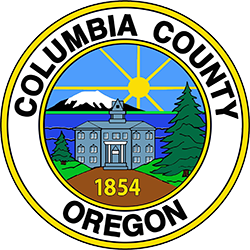Thunderstorms and Lightening
Thunderstorms and Lightening
Thunderstorms are dangerous. Every thunderstorm produces lightening. Be aware of the additional dangers that can be associated with a thunderstorm – hail, heavy rain, flash flooding, fire and high winds.
- Remove dead or rotting trees and branches that could fall and cause injury or damage during a severe thunderstorm.
- Secure outdoor objects that could blow away or cause damage.
- STAY INDOORS and stay away from windows.
Windstorms and Tornadoes
The Pacific Northwest escapes the threat of hurricanes, but we are no stranger to strong, damaging wind storms.
Before a Wind Storm
- Be familiar with evacuation routes should you need to leave the area before a wind storm.
- Make sure you have an emergency kit.
- Trim dead or dying branches from trees, trim branches away from your home and remove large trees that may fall and damage property during a wind storm.
- If you have an electric garage door opener, learn how to open it manually in case of a power outage.
- Items on your property that may have the potential to blow away and case damage or become lost should be stored indoors or secured – garbage cans, lawn and patio furniture, potted plants, or carports.
During a Wind Storm
- If you are indoors, move away from windows or other objects that could fall and stay on the lower floors in multi-story homes. Turn off natural gas appliances and any electronics or lights that are not immediately needed.
- Call 9-1-1 only to report a life-threatening emergency. Know your local non-emergency and utility phone numbers to report outages and downed trees.
- If you smell natural gas, leave the building immediately and turn off the gas at the meter (if it is safe to do so). Then call your utility company to report the leak. You should NOT turn the gas back on. This has to be done by the natural gas company.
- Stay away from downed power lines and trees.
Tornadoes
The Pacific Northwest is not known as tornado country but we can, occasionally, get unstable weather that can produce a tornado. Aumsville and Manzanita, Oregon and Vancouver, Washington have had tornadoes within the last few years.
Determine in advance where you will take shelter in case of a tornado warning and make sure it is part of your emergency plan:
- Storm cellars or basements provide the best protection.
- If underground shelter is not available, go into an interior room or hallway on the lowest floor possible.
- In a high-rise building, go to a small interior room or hallway on the lowest floor possible.
- Stay away from windows, doors and outside walls. Go to the center of the room. Stay away from corners because they attract debris.
- A vehicle, trailer or mobile home does not provide good protection. Plan to go quickly to a building with a strong foundation, if possible.
- If shelter is not available, lie flat in a ditch or other low-lying area. Do not get under an overpass or bridge. You are safer in a low, flat location.
- Plan to stay in the shelter location until the danger has passed.
- Have a weather radio available to listen for storm watches and warnings. These inexpensive radios may be purchased at your local hardware or department store.
Here is more information about tornadoes.

